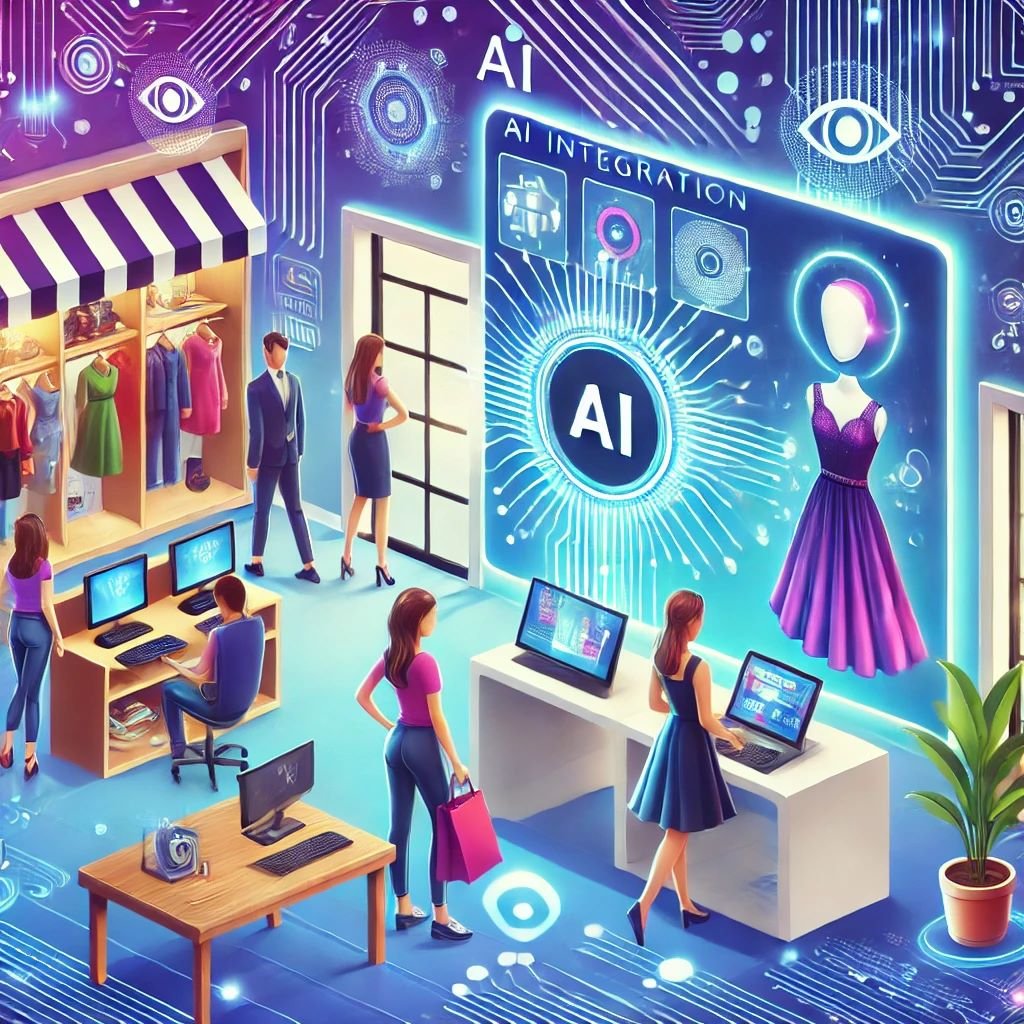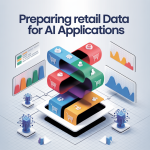
Examples of Retail Businesses Using ChatGPT Effectively
ChatGPT has become a valuable tool for retail businesses, transforming customer interactions, streamlining operations, and enhancing employee engagement.
By integrating ChatGPT into various aspects of their operations, retailers are improving customer satisfaction and operational efficiency.
Below are some examples of how retail businesses are leveraging ChatGPT effectively.
1. Online Customer Support
Example: Sephora
- Use Case: Virtual beauty assistant.
- How It Works: ChatGPT helps customers find the right beauty products by answering queries about skin type, preferences, and product details.
- Benefit: Reduces response times and improves customer satisfaction by providing personalized recommendations 24/7.
Example: Decathlon
- Use Case: FAQ automation.
- How It Works: ChatGPT-powered chatbots handle common customer inquiries about product availability, return policies, and order tracking.
- Benefit: Enhances customer experience by providing instant, accurate answers.
2. Product Recommendations and Personalization
Example: Amazon
- Use Case: Product search assistance.
- How It Works: ChatGPT powers conversational AI that helps users navigate through product categories, refine searches, and discover items tailored to their preferences.
- Benefit: Boosts sales by improving the discovery of relevant products.
Example: Wayfair
- Use Case: Home design suggestions.
- How It Works: ChatGPT assists customers in choosing furniture and decor based on room dimensions, style preferences, and budget.
- Benefit: Enhances the shopping experience and reduces decision fatigue for customers.
3. Employee Training and Knowledge Sharing
Example: Walmart
- Use Case: Training support.
- How It Works: ChatGPT provides real-time answers to employee questions about company policies, workflows, and product details.
- Benefit: Accelerates onboarding for new hires and enhances staff productivity by reducing dependency on managers for routine queries.
Example: Target
- Use Case: Internal knowledge base.
- How It Works: ChatGPT acts as a virtual assistant for employees, offering instant access to training materials, inventory management guidelines, and store-specific information.
- Benefit: Streamlines operations by empowering employees with quick, accurate information.
4. Marketing and Customer Engagement
Example: Starbucks
- Use Case: Personalized marketing campaigns.
- How It Works: ChatGPT generates personalized messages for customers, such as seasonal offers or loyalty program updates, based on their purchase history.
- Benefit: Increases customer engagement and loyalty through tailored communication.
Example: Nike
- Use Case: Chat-driven promotional campaigns.
- How It Works: ChatGPT engages customers during product launches or promotions by answering product-specific queries and offering insights on fitness and fashion trends.
- Benefit: Drives traffic to product pages and enhances the brand’s digital presence.
5. In-Store Assistance
Example: H&M
- Use Case: Virtual stylist.
- How It Works: ChatGPT-powered kiosks in stores assist customers with outfit suggestions based on current trends and their preferences.
- Benefit: Improves in-store experiences and encourages upselling.
Example: IKEA
- Use Case: Store navigation.
- How It Works: ChatGPT assists customers in locating items in large stores, streamlining the shopping process.
- Benefit: Reduces frustration and enhances the overall shopping experience.
6. Streamlined Customer Feedback
Example: Best Buy
- Use Case: Sentiment analysis.
- How It Works: ChatGPT collects and analyzes customer feedback through conversational surveys, identifying trends and areas for improvement.
- Benefit: Helps the company address customer concerns proactively and improve service quality.
Example: Zara
- Use Case: Post-purchase engagement.
- How It Works: ChatGPT reaches out to customers after purchases to gather feedback and suggest complementary items.
- Benefit: Builds stronger relationships and drives repeat business.
7. E-Commerce Support During High Traffic
Example: ASOS
- Use Case: Seasonal sale support.
- How It Works: ChatGPT handles customer queries during busy sales periods, such as Black Friday, to reduce wait times.
- Benefit: Prevents cart abandonment and improves customer satisfaction during peak shopping events.
Example: Macy’s
- Use Case: Returns and exchanges.
- How It Works: ChatGPT automates return processes by guiding customers through return policies and initiating exchange requests.
- Benefit: Streamlines after-sales service and reduces operational load.
8. Real-Time Order Tracking and Updates
Example: Domino’s Pizza
- Use Case: Order tracking assistant.
- How It Works: ChatGPT provides customers with real-time updates on their order status through the website or app.
- Benefit: Enhances transparency and builds customer trust.
Example: Walmart
- Use Case: Delivery notifications.
- How It Works: ChatGPT informs customers of delivery timelines and handles rescheduling requests.
- Benefit: Improves the delivery experience with timely, automated updates.
Retail businesses across various sectors are effectively using ChatGPT to enhance customer service, streamline operations, and engage employees.
By integrating ChatGPT into their workflows, these businesses not only reduce costs but also deliver superior experiences that drive customer satisfaction and loyalty.
As AI technology continues to evolve, its role in retail will only become more significant, making ChatGPT an indispensable tool for forward-thinking retailers.
Lessons Learned and Best Practices for AI Implementation in Retail
As AI technologies like ChatGPT continue to transform the retail landscape, businesses are uncovering valuable lessons and refining best practices to maximize the benefits of AI.
Here’s a summary of key insights and actionable strategies for retailers looking to leverage AI effectively.
Lessons Learned
1. Start Small, Scale Strategically
Lesson: Retailers implementing AI often find greater success by starting with small, focused projects rather than attempting large-scale changes immediately.
- Example: Launching an AI-powered chatbot for customer FAQs before expanding to complex personalization features.
2. Data Quality is Critical
Lesson: Poor-quality or fragmented data leads to inaccurate AI outputs. Ensuring clean, consistent, and comprehensive data is vital for AI effectiveness.
- Solution: Invest in data management and integrate systems for seamless data flow.
3. Human Oversight is Essential
Lesson: AI tools are powerful but not infallible. Human oversight ensures the technology remains accurate, empathetic, and aligned with brand values.
- Example: Retail staff reviewing chatbot responses to maintain tone and relevance.
4. Clear Objectives Drive Success
Lesson: AI implementations without clear goals often fail to deliver measurable results.
- Solution: Define KPIs, such as cost savings, increased sales, or enhanced customer satisfaction, before deploying AI.
5. Employee Buy-In Matters
Lesson: Resistance from employees can hinder AI adoption. Including staff in the implementation process and addressing concerns boosts acceptance.
- Example: Providing training on how AI complements, rather than replaces, their roles.
6. Continuous Improvement is Necessary
Lesson: AI systems require regular updates and learning to remain effective as customer behaviors and market conditions evolve.
- Solution: Use feedback loops and performance analytics to refine AI tools continuously.
Best Practices
1. Prioritize Customer-Centric Use Cases
Focus on AI applications that directly enhance the customer experience, such as personalization, faster service, and seamless interactions.
- Example: Using ChatGPT for real-time customer assistance, product recommendations, and post-purchase follow-ups.
2. Invest in Robust Data Infrastructure
Build a strong data foundation with advanced analytics, centralized databases, and tools for real-time data processing.
- Tip: Implement AI-ready platforms that integrate seamlessly with existing CRM, POS, and inventory systems.
3. Maintain Transparency and Ethical Use
Adopt ethical AI practices to ensure customer trust and regulatory compliance.
- Examples:
- Clearly communicate how customer data is used.
- Ensure AI recommendations are fair and unbiased.
4. Test and Iterate
Use pilot projects to test AI tools in controlled environments before rolling them out widely.
- Tip: Collect user feedback during testing to identify areas for improvement.
5. Align AI with Business Goals
Ensure AI tools are aligned with overall business objectives, such as revenue growth, operational efficiency, or sustainability.
- Example: Deploy AI to optimize inventory and reduce waste if sustainability is a priority.
6. Train and Support Employees
Provide comprehensive training programs for employees to understand and use AI tools effectively.
- Tip: Create AI literacy workshops and ongoing support channels for staff.
7. Measure ROI Regularly
Track the performance of AI initiatives against predefined metrics to ensure they deliver value.
- Example Metrics:
- Customer satisfaction scores.
- Reduction in operational costs.
- Increased conversion rates or average order value.
8. Leverage AI for Both Online and Offline Channels
Integrate AI tools to create a seamless omnichannel experience.
- Example: Use AI to sync inventory data across e-commerce and physical stores for accurate stock visibility.
Common Pitfalls to Avoid
- Overcomplicating Implementation: Trying to tackle multiple AI projects simultaneously can lead to inefficiencies and reduced impact.
- Ignoring Employee Feedback: Neglecting staff input during deployment can result in poor adoption and underutilization of AI tools.
- Underestimating Costs: While AI reduces long-term expenses, initial investments in technology and training can be significant.
- Lack of Customer Focus: Failing to prioritize customer needs and preferences when deploying AI can harm the shopping experience.
Success Stories and Takeaways
1. Sephora
- AI Use Case: Virtual assistants for beauty product recommendations.
- Takeaway: Personalized AI interactions significantly boost customer engagement and sales.
2. Walmart
- AI Use Case: Inventory optimization and supply chain management.
- Takeaway: Streamlining operations with AI reduces costs and improves efficiency across the retail chain.
3. Nike
- AI Use Case: Personalized marketing campaigns.
- Takeaway: AI-driven insights help tailor messaging, increasing conversion rates and customer loyalty.
Implementing AI in retail requires careful planning, robust data management, and a customer-centric approach.
By learning from past experiences and following best practices, retailers can unlock the full potential of AI to reduce costs, enhance efficiency, and deliver exceptional customer experiences.
Success lies in ongoing refinement and alignment of AI initiatives with business goals and customer expectations.
Future Trends and Potential Developments in AI for Retail
AI is rapidly evolving, offering new opportunities for innovation in the retail industry.
As technology advances, retailers can expect AI to drive greater efficiency, personalization, and sustainability.
Here’s an overview of future trends and potential developments that will shape the retail landscape.
1. Hyper-Personalization at Scale
AI will enable unprecedented levels of personalization, tailoring the shopping experience to individual preferences, behaviors, and real-time contexts.
- What to Expect:
- Dynamic Product Displays: Personalized homepages and in-store screens that adapt to individual preferences.
- Emotion AI: Systems that analyze customer emotions to refine recommendations and service.
- Context-Aware Offers: AI will factor in real-time conditions, such as weather or location, to deliver timely and relevant promotions.
Example: A customer entering a store on a rainy day might receive a personalized offer for umbrellas or raincoats via a mobile app.
2. AI-Powered Autonomous Stores
Retailers will move toward fully automated, cashier-less stores, leveraging AI for seamless transactions and inventory management.
- Key Technologies:
- Computer Vision: Tracks products picked off shelves for automatic billing.
- IoT Integration: Monitors inventory in real-time to trigger reorders.
- AI Checkout Systems: Eliminates the need for traditional checkout processes.
Example: Amazon Go stores already offer a glimpse into this trend, allowing customers to shop without scanning items or interacting with cashiers.
3. Immersive Shopping with AR and VR
AI combined with augmented reality (AR) and virtual reality (VR) will create immersive shopping experiences.
- Potential Developments:
- Virtual Try-Ons: Shoppers can virtually try clothes, accessories, or makeup.
- VR Shopping Environments: Customers can explore virtual stores or showrooms from home.
- AR Navigation: In-store apps guide customers to specific products while offering real-time promotions.
Example: IKEA’s AR app already allows customers to visualize furniture in their homes, and future iterations could integrate AI for design suggestions.
4. Advanced Supply Chain Automation
AI will continue to transform supply chain management, enhancing efficiency and resilience.
- Future Capabilities:
- Predictive Supply Chains: AI will predict disruptions and reroute shipments automatically.
- Smart Warehouses: Autonomous robots powered by AI will handle picking, packing, and inventory management.
- Sustainability Optimization: AI will minimize carbon footprints by optimizing routes, packaging, and sourcing.
Example: AI could forecast delays due to weather or geopolitical events, ensuring proactive adjustments in supply chains.
5. Voice Commerce Expansion
Voice assistants will become integral to retail, enabling customers to search, order, and manage purchases through voice commands.
- Emerging Trends:
- Conversational Shopping: AI-powered voice bots provide personalized recommendations during conversations.
- Integration with Smart Devices: Voice shopping integrated into household devices like refrigerators or mirrors.
- Multimodal Interfaces: Combines voice with visuals for a richer shopping experience.
Example: A customer asks a voice assistant to reorder groceries, and the system suggests adding items based on previous shopping habits.
6. Ethical AI and Transparent Practices
As AI adoption grows, retailers will focus on ethical use and transparency to build customer trust.
- Key Focus Areas:
- Fair Algorithms: Ensuring AI does not perpetuate biases in recommendations or hiring.
- Data Privacy: Transparent policies about data collection and usage.
- Sustainability Tracking: AI tools that provide customers with insights into the environmental impact of their purchases.
Example: A fashion retailer might use AI to highlight the carbon footprint of each item, helping customers make eco-friendly choices.
7. Predictive and Proactive Customer Engagement
AI will anticipate customer needs and engage proactively, reducing friction in the shopping journey.
- Innovations to Watch:
- Proactive Assistance: Virtual assistants that address issues before customers raise them (e.g., late delivery notifications with compensation offers).
- Smart Recommendations: Predicting trends and suggesting products before customers realize their need.
- Health-Aware Retail: AI-powered systems that recommend products based on dietary preferences, allergies, or health goals.
Example: A grocery app could suggest meal plans and auto-generate shopping lists based on a customer’s preferences and pantry stock.
8. AI-Driven Marketing Evolution
AI will refine marketing campaigns, making them more personalized, dynamic, and effective.
- Future Developments:
- Real-Time Campaign Optimization: AI adjusts marketing strategies based on immediate performance metrics.
- Interactive AI Ads: Personalized ads that engage customers in real-time conversations.
- Hyper-Localized Promotions: AI will tailor offers based on a customer’s exact location and momentary context.
Example: A customer walking near a coffee shop might receive a discount notification tailored to their preferences.
9. Employee Augmentation and AI Collaboration
AI will act as a co-worker for retail employees, enhancing their capabilities and efficiency.
- Upcoming Changes:
- AI-Powered Training: Virtual assistants will guide employees through onboarding and skill development.
- Task Automation: AI will handle routine tasks, allowing employees to focus on customer engagement.
- Decision Support: AI will provide data-driven recommendations to support managerial decisions.
Example: AI could alert store managers about low-performing SKUs and suggest actions to boost sales.
10. Integrated Ecosystems and Omnichannel Experiences
Retailers will integrate AI across all touchpoints to create a seamless omnichannel experience.
- Future Capabilities:
- Unified Customer Profiles: AI synchronizes data from online and offline interactions to deliver consistent experiences.
- Cross-Channel Inventory Management: Customers see real-time stock availability across all channels.
- AI-Powered Returns: Simplified returns processes, whether in-store or online, using AI for fraud detection and customer support.
Example: A customer researching a product online could receive personalized assistance when they visit the physical store, with AI syncing their preferences.
AI will continue to drive innovation in retail, shaping the future of shopping through hyper-personalization, automation, and immersive experiences.
By embracing these trends, retailers can stay competitive, enhance customer satisfaction, and achieve sustainable growth in a rapidly evolving market.
The key to success lies in staying agile and integrating AI thoughtfully across operations, customer interactions, and strategic planning.



